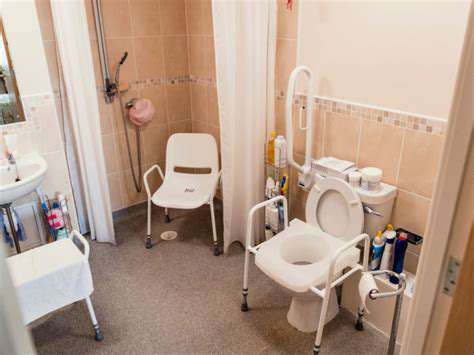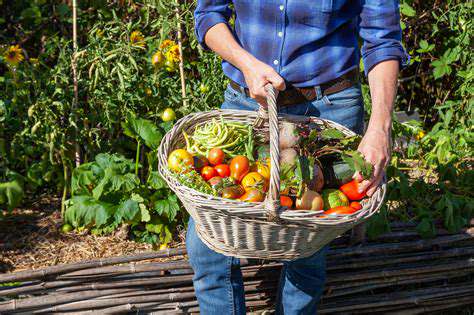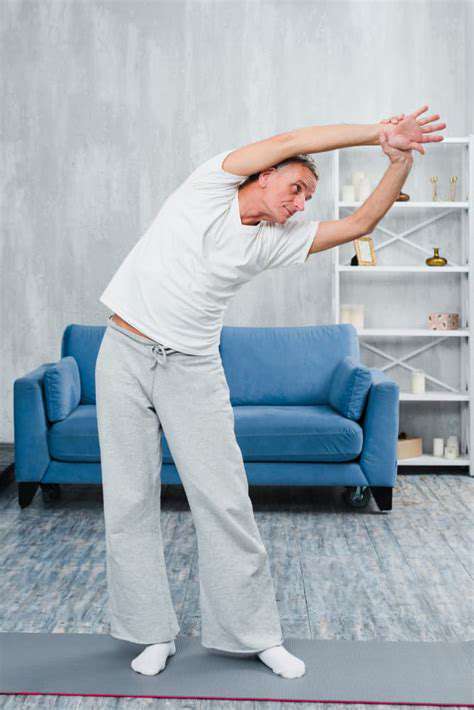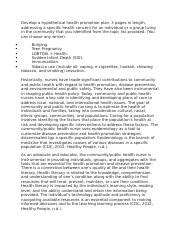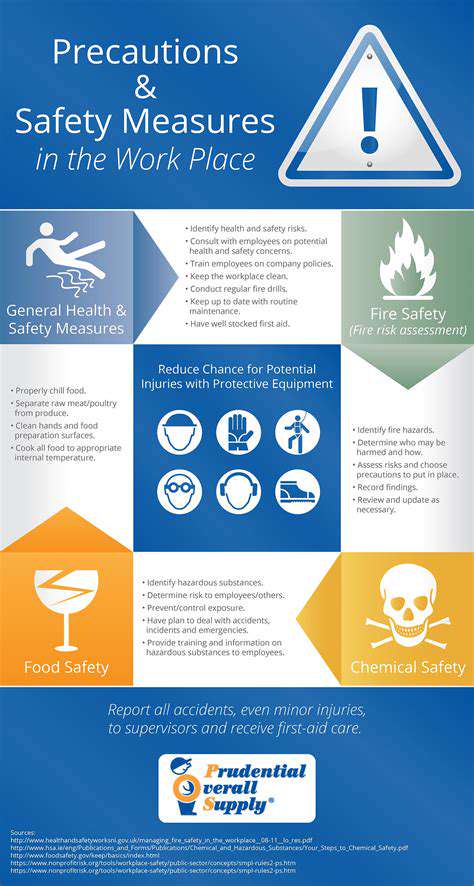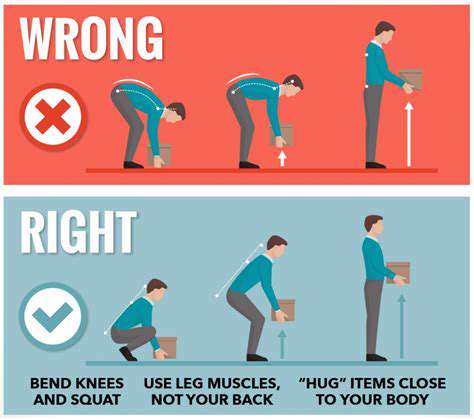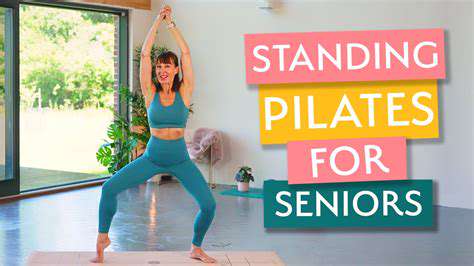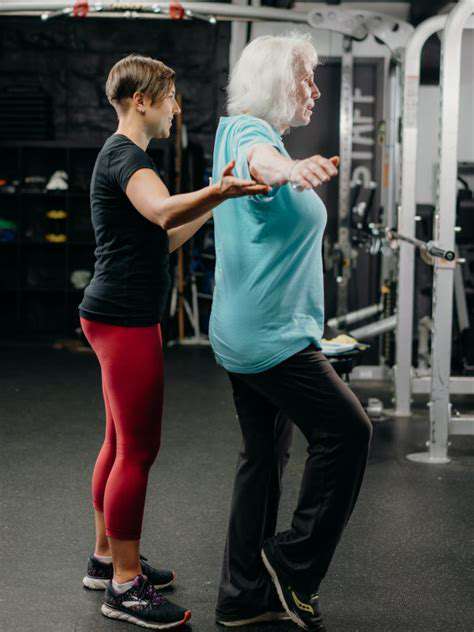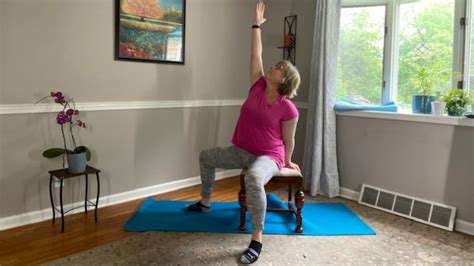Home Safety Tips to Complement Senior Balance Training
Assessing Potential Hazards
Identifying potential tripping hazards in your home is crucial for creating a safe environment. Pay close attention to areas with uneven flooring, loose rugs, or cords that could be easily stumbled upon. Inspect staircases for adequate lighting, secure handrails, and any loose or missing steps. This proactive assessment will help you pinpoint specific areas needing modification to prevent falls and ensure a safer home for everyone.
Regularly check the condition of your home's lighting fixtures. Dim or flickering lights can be a significant hazard, especially in hallways and stairwells. Ensure all light bulbs are functional and adequately illuminate pathways. This simple step can significantly reduce the risk of falls, particularly in low-light conditions.
Improving Lighting Conditions
Adequate lighting is paramount for safety, especially in areas that may be dimly lit or not properly illuminated. Installing brighter light fixtures, strategically placed lamps, and motion-activated lighting can greatly enhance visibility, making it easier to navigate your home safely, particularly in the evenings. This improvement in illumination will significantly reduce the chance of stumbling or falling in poorly lit spaces.
Flooring and Rug Safety
Choosing the right flooring and ensuring proper rug placement can make a big difference in preventing falls. Slip-resistant flooring materials, such as ceramic tile or vinyl, are excellent choices in high-traffic areas. Secure rugs with non-slip pads to prevent them from shifting or sliding, which can cause tripping hazards. This attention to detail in flooring and rug placement can significantly lower the risk of falls in your home.
Stair Safety Modifications
Stairways are often overlooked safety hazards. Ensure handrails are present and securely fastened on both sides of the stairs. Repair or replace any loose or damaged steps immediately. Properly illuminating stairways with adequate lighting is crucial, especially at night. These modifications will considerably reduce the risk of falls on the stairs, ensuring a safer route for everyone using them.
Bathroom Safety Enhancements
Bathrooms are often a prime spot for falls, particularly for older adults or those with mobility issues. Install grab bars near the toilet and shower/tub. Use non-slip mats or surfaces in the shower or tub area. Ensure the bathroom has adequate lighting. By implementing these safety measures, you can substantially decrease the risk of falls in this often-hazardous area of the home.
Kitchen Safety Considerations
The kitchen can be a source of falls, especially if there are obstacles or trip hazards. Ensure that walkways are clear of clutter and obstacles. Use non-slip mats or rugs in areas where there might be spills or water. Ensure proper lighting in the kitchen, especially work areas. These careful considerations in the kitchen will greatly reduce the risk of falls and injuries in this busy part of the house.
Improving Lighting for Enhanced Visibility
Improving Interior Lighting
Proper interior lighting is crucial for seniors' safety and well-being, significantly reducing the risk of falls and accidents. Installing brighter, more strategically placed light fixtures can dramatically improve visibility in hallways, stairwells, and bathrooms. Consider using LED bulbs, as they offer energy efficiency and a bright, crisp light that's ideal for illuminating common areas. Replacing outdated incandescent bulbs with modern LED options can make a huge difference in the overall ambiance and safety of the home.
Focusing on task lighting is also important. For example, installing a well-placed lamp next to a reading chair or near a frequently used workspace can dramatically improve visibility and reduce eye strain. This targeted illumination helps to reduce shadows and enhances the ability to perform daily tasks safely and comfortably. Furthermore, consider installing motion-activated lights in hallways and other areas where seniors frequently navigate, ensuring that the pathway is well-lit as they move through the house.
Outdoor Lighting Strategies for Enhanced Safety
Exterior lighting is just as important as interior lighting for preventing falls and maintaining a safe environment. By strategically placing outdoor lights, you can create a well-lit path that makes it easier for seniors to navigate from the front door to the garage or garden. Consider installing motion-sensor lights near entryways, walkways, and steps to illuminate these areas automatically when needed. This proactive approach to outdoor lighting not only enhances safety but also provides a sense of security, especially at night.
Ensuring adequate lighting around the perimeter of the home, including pathways and steps, is critical. Well-lit areas make it easier for seniors to see potential obstacles and hazards, reducing the risk of tripping or falling. Choose outdoor lighting fixtures that provide a bright, even spread of light, avoiding harsh glare. The goal is to create a clear and unobstructed path, making it easier for seniors to move about the property safely and confidently.
Adding spotlights to highlight potential tripping hazards like uneven pavement or steps also helps. This adds a layer of precaution that complements the overall lighting strategy. Consider using warm-toned lighting outside to create a welcoming and safe environment, reducing any feeling of being in a dark or unsafe space.
Installing porch lights and pathway lights can greatly improve visibility around the home, especially for seniors who may need extra assistance with outdoor tasks or simply want to enjoy the outdoors more comfortably.
Stair Safety and Mobility Aids: Enhancing Accessibility
Choosing the Right Stair Handrails
Properly installed stair handrails are crucial for safe navigation, especially for seniors and individuals with mobility limitations. Handrails should be sturdy, easily grasped, and extend the entire length of the staircase, including any landings. Consider the material – wood, metal, or composite – and ensure it's non-slip to prevent accidents. Properly spaced handrails allow for a secure grip, promoting stability and confidence during ascent and descent.
Evaluating the existing handrails in your home, and the specific needs of your household members, is essential. This includes factors like age, physical abilities, and any existing injuries. Professional installation is recommended to ensure safety and adherence to building codes, further minimizing potential hazards.
Stair Tread Safety and Maintenance
Inspecting stair treads for wear and tear, loose or missing elements, and uneven surfaces is paramount. Regular maintenance, including cleaning and addressing any damage, prevents slips and falls. Consider using non-slip treads or mats if needed to enhance safety on existing steps. These measures are especially important for individuals with reduced balance or impaired vision.
Addressing any uneven surfaces or damaged areas promptly is key to maintaining a safe environment. This can involve replacing worn treads, repairing loose or damaged parts, or installing non-slip surfaces as needed. Preventing falls is essential for preserving independence and safety at home.
Installing Stair Lifts for Enhanced Mobility
Stair lifts are a valuable assistive device for individuals with mobility issues. They provide a safe and convenient way to navigate stairs, preserving independence and enabling easier access to different floors. Proper installation and maintenance are crucial for efficient and safe operation. Carefully assessing the stair dimensions and space requirements before installation is essential.
Considering the features and functionality of stair lifts, such as the type of power source, weight capacity, and ease of operation, is essential. A thorough evaluation of individual needs and preferences will contribute to a satisfying and safe experience.
Utilizing Stair Railing for Support
Stair railings, with their supporting function, play a critical role in maintaining balance and stability during stair use, especially for those with limited mobility. Ensuring sufficient space for the handrail positioning, as well as the handrail's structural integrity, is vital. Regular checks for any damage to the railings, and prompt repairs, are key safety measures.
Handrails that are firmly attached and extend the entire length of the staircase, including any landings, offer crucial support and reduce the risk of falls. This proactive measure is particularly important for individuals at risk of falls, including older adults.
Preventing Slips and Falls on Stairs
Implementing measures to prevent slips and falls on stairs is crucial for enhancing safety and preventing injuries. This includes ensuring that steps are well-lit, using non-slip materials, and removing any potential tripping hazards. These proactive safety measures will decrease the risk of accidents and injuries for all household members.
Keeping stairways free of clutter, such as loose rugs or cords, is a simple but effective way to prevent slips and falls. Regularly inspecting and addressing any potential hazards, such as worn or damaged treads, will ensure a safe environment.
Choosing Mobility Aids for Stair Navigation
A variety of mobility aids can assist with stair navigation, such as stair lifts, stair glides, and handrails. Selecting the most appropriate aid depends on individual needs and the specific characteristics of the staircase. Consider factors such as the user's physical abilities, the staircase's dimensions, and budget constraints when making a decision. It's wise to seek professional advice when evaluating various options.
Understanding the features and benefits of different stair mobility aids is crucial for selecting the right option. Researching various models, comparing prices, and considering user reviews can aid in making an informed decision. Prioritizing safety and ease of use in the selection process will contribute to a positive user experience.
